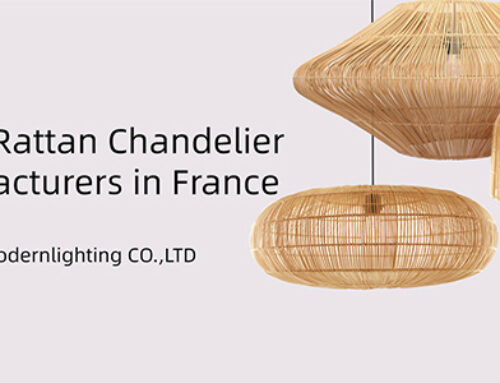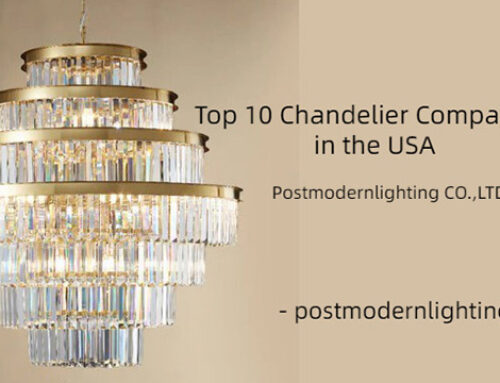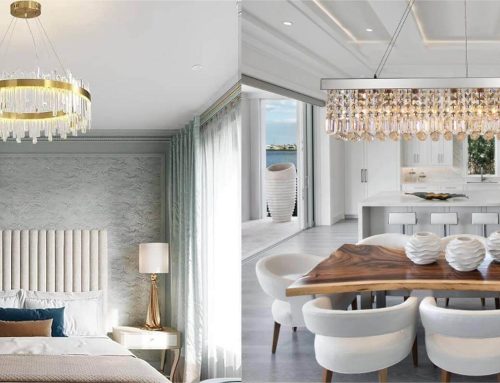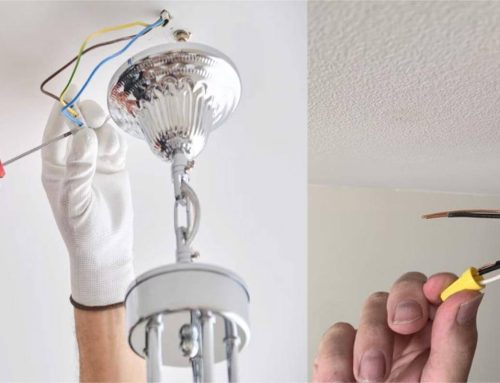Making decisions is not an easy thing. Of course, include choosing the right size chandelier. The fact is we don’t even know where to start sometimes. So, What size chandelier should be used in a restaurant? What about the foyer? This chandelier guide will help you resolve these questions. Anyone looking for information about chandeliers or considering purchasing one should read this.
Let’s take a closer look at how to choose the right chandelier size. You will learn about the main types of chandeliers available and what you need to know about them.
1. What is a chandelier?
In short, a chandelier is a light fixture that hangs from the ceiling. In our common consciousness, chandeliers are most commonly used in dining rooms, but they can also be used in living rooms, bedrooms, and any other room. Any room that requires a sense of atmosphere can install it. In terms of composition structure, the chandeliers are composed of many small light bulbs. So you can see it usually in a multi-layer structure.
Oh, there is a confusing point: some people may confuse a regular chandelier with a chandelier. Do you know the difference between them? Well, let me tell you. A chandelier usually refers to a lampshade or light source suspended from a single wire or suspension system, whereas a chandelier often has multiple lampshades or light sources.
However, people still tend to be confused about the difference between a chandelier and a chandelier when comparing larger-sized chandeliers even with this distinguishing reference.

(Another related post: Chandelier VS. Pendant Light: What is the Difference?)
2. The history of the chandelier
Now, let me introduce you to the history of chandeliers. If you check some information, you can find the chandelier was born in the Middle Ages. From that on, chandeliers have come a long way from animal-fat candelabra to symbols of social status. Now, They are elegant light fixtures found in thousands of homes. Yes, you read that right. The word chandelier is a derivative of the French chandelle, which means candle.
As early as 1066, Anglo-Saxon churches would hang wooden structures from the ceiling to support candles made of animal fat, providing ample lighting throughout the room. Such were the humble origins of the chandelier. Decades later, these lighting fixtures have gone through countless changes and updates, including the innovation of LED chandeliers.
1) A brief background history of the chandelier
Chandeliers first appeared as early as the 15th century; at that time, they were commonly known as poly candelons. Very similar to Byzantine art of the fifth and sixth centuries, the menorah took the form of a wooden cross or a flat metal disc with an extension hanging from where the candle was placed. Soon after, these pioneering chandelier prototypes were widely used in churches and then found a place in castles and royal palaces.
By the end of the 15th century, chandelier craftsmen had adopted new production techniques and utilized different materials to create improved and refined chandelier designs. Chandeliers symbolized victory, power, luxury, and class as most wealthy and aristocratic homes used them as decorative ornaments rather than functional lighting fixtures. It’s safe to say that the introduction of intricate gilded elements and bold shapes revolutionized the evolution of chandeliers.
2) The development of chandeliers from the 16th to the 19th centuries
The evolution of the chandelier didn’t stop there. By the 16th century, these buildings had gained prominence and appeared in working-class homes. However, even as the exclusivity of the chandelier faded, the gap between social classes remained wide.
More elaborate, ornate designs continued to appear across Europe, distinguishing middle-class homes from the aristocracy—with working-class homes featuring wrought iron, wood, and tin chandeliers. In contrast, the Bourgeoisie employed crystal chandeliers suspended from gilded silver metal structures. Since then, the history of chandeliers has undergone significant improvements. This is a breakdown.
3) 17th-18th century chandelier
By the 17th century, chandelier designs became more refined as craftsmen explored different variations and raw materials. Finally, the 18th century brought a major shift from clear crystal chandeliers to uniquely colored blown glass. The Italian brains behind this revolution, Gio Ponti, was a brilliant architect/designer from the Venetian island of Murano.
He created Venetian glass as a relatively cheaper alternative to crystal for chandeliers. Not only was Venetian glass affordable, but it was also brighter, clearer, softer, and easier to shape – marking the golden age of chandeliers.
4) 19th century chandelier
By the 19th century, chandeliers became popular, with well-known brands like Daniel Swarovski producing cut gemstones for gorgeous crystal chandeliers. However, when the revolution was at its peak, house fires were rampant, prompting innovators to develop safer options. In the nineteenth century, gases were introduced as a major source of artificial light. Candle chandeliers were soon replaced by glass-encapsulated gas lamps.
5) 20th century chandelier
The second half of the nineteenth century was marked by the discovery of electricity, followed by the mass production of light bulbs and electric chandeliers. At this stage, society was more concerned with optimal lighting; therefore, most homes abandoned bulky crystal elements in favor of affordable and simpler chandeliers.
6) Modern
Today, chandelier designs can incorporate traces of the past or go in completely new directions. The 1930s saw a dramatic Rococo revival, while the Art Deco style that marked the 1920s also harks back to the past. Modernism became popular in the early 20th century and the mid-century modern look ruled the mid-century (you might have guessed it), but today’s chandelier market accommodates it all: Rococo opulence, neoclassical simplicity, Tiffany beauty, contemporary intrigue, and more.
Modern chandeliers are revolutionary and most come in a variety of forms and designs. Throughout the long history of the chandelier, there have been many changes, but there is one constant – optimization. For centuries, dating back to the days of the menorah, society has sought to improve and upgrade the functionality of chandeliers.
Today, chandeliers feature more sustainable and affordable LED options. With a variety of designs to choose from, we’re looking for an impressive selection of pendant lights to match any home theme, taste, and preference. So, go ahead and bring the elegance your space deserves with LED pendant lights.
(Another related post: Chandelier Buying Guide)
3. What are the types of chandeliers?
There are five types below:
1) Chandelier with shades
There are two styles of Chandeliers, they are modern and traditional. But whatever type of chandelier you choose, it has a light-blocking feature. The large drum shade or a separate shade that covers the bulb is a good example. Compared to candle lights, chandeliers have their own advantages, that is being blackout, and producing warmer and softer lighting.
The more common shades of chandeliers are usually made of different types of glass or metal. Some lampshades face up, some face down, and some have glass lampshades that completely enclose the bulb. Chandeliers are therefore more suitable than candlelights for modern and traditional homes and are also ideal for illuminating these scenes in entrance halls, bedrooms, living rooms, or dining rooms.
2) Crystal chandelier
Crystals material is the biggest advantage of crystal chandeliers. Simakity, just like other types of chandeliers, crystal chandeliers also have many shapes and sizes. In this way, they do not only do crystals create an elegant look, but they also diffuse the chandelier’s light in all directions. Therefore, if you want to make some place a statement. I will advise you to choose crystal chandeliers. Because these chandeliers will look more colorful and more eye-catching than other chandeliers.
3) Drum chandelier
Drum chandeliers feature multiple small bulbs inside a larger outer shade. Like some simple drum-shaped chandeliers. As long as there is no baffle installed at the bottom of the lampshade, you can see the bulbs from below.
However, no matter what style of chandelier they are, they will have an external lampshade with many light bulbs inside. This kind of chandelier is very suitable for modern families and traditional families. Also, it is very suitable for use in bedrooms, corridors, living rooms, and other scenes.
4) Modern chandelier
Modern chandeliers are light fixtures with a futuristic style. Usually, this type of chandelier has a geometric design. And modern designs come in all shapes and sizes, most of them embodied in geometric shapes and frosted glass. Therefore, modern chandeliers will be more suitable for modern homes or rooms with a modern style.
5) Rattan lighting chandelier
The rattan lighting chandelier is a new type of chandelier derived from modern lighting design. Each one is unique is the biggest advantage of rattan lighting chandeliers. Although the texture, structure, and movement of the fibers may look similar from piece to piece, each piece has its own unique characteristics. This makes it worth looking at again.
Postmodernlighting’s rattan curtain chandeliers are made of native bamboo and hand-woven, making them durable and resistant to deformation.

(Another related post: Crystal Chandelier VS. Glass Chandelier: What is the Difference?)
4. Cost of chandelier
Here are the costs associated with chandeliers.
1) Chandelier price range
Chandeliers come in a variety of price points. Most are mini chandeliers measuring less than 20 inches and can be found everywhere. If you are talking about chandeliers that are 30 inches and above in size as one of the main decorations of your home. Then they are usually not that affordable. But there is a wide price range for you to choose: $250 to $300,000.
2) Why are chandeliers so expensive?
In the manufacturing process, chandelier requires expertise a lot of time and work, and is expensive. What’s more, there aren’t many chandelier manufacturers in the US or EU, so most chandelier products are imported. You can watch how prices gradually increase as they move from producers to importers, distributors, brick-and-mortar stores, and perhaps the Internet, and then to buyers before buying.
Standard model: Each party in the middle adds a cost that is ultimately paid by you, the customer.
Another key question is the type of crystal, which has a significant impact on the price of the chandelier. Below is a list of crystal types, ranging in price from expensive to cheap.
- Swarovski element crystal glass
- Spectral Crystal
- Egyptian/Moroccan crystal (gem cut)
- Turkish Crystal (Hand Cut, Traditional Hand Cut, Magnificent)
- Italian crystal (traditional, Venetian)
- K9 crystal
Most customers, unless they are experts, cannot identify the differences between different varieties of crystals.
3) Chandelier purchasing strategy
Now you know why chandeliers are so expensive. When you search for “cheap chandeliers” or “budget chandeliers” online. You can find significant discounts from some suppliers, such as 40% off or more. However, even with the price reduction, the final price is still extremely expensive. I think most likely, they are one of the players using traditional business strategies. At the beginning, they mark the price extremely high to give you the illusion of a fantastic offer.
Here are some practical and easy tips for finding cheap chandeliers:
Choose a crystal from the bottom of the list, such as K9, which will save you a lot of money and look just as beautiful as more expensive crystals.
Try to find a quality brand like us – Postmodernlighting – that sells products directly online so you don’t have to pay all those extra fees. We use specialized procedures to inspect each product before it is offered or shipped. This requires strict quality and accuracy standards. We use the strongest corrugated boxes to ship your products. They are made by a special corrugated box machine, which can fully guarantee the safety of the chandelier during transportation. Additionally, we cut out the middleman and connect you directly with the manufacturer, which can save you up to 60%.
(Another related post: A Quick Guide to Chandelier Crystal Quality)
5. How to hang a chandelier?
The steps for hanging a chandelier typically go as follows:
Firstly, prepare tools and materials: you need to prepare the following tool: chandelier, chandelier accessories (hook, chandelier wire, connectors, etc.), screwdriver, and electric drill (if necessary).
Secondly, determine where to install: you’d better use a wire finder on the ceiling to find safe wire locations and use wire conduit to hide the wires.
Thirdly, install the hook: you use an electric drill to drill holes in the ceiling and secure the hook to the ceiling.
Fourth, connect the wire: before you start to install, please read the instructions. and then according to the instructions in the chandelier manual, connect the chandelier wire to the power cord and secure it with the connector.
Fifth, install the chandelier: Also according to instructions. Hang the chandelier on the hook according to the instructions in the chandelier instruction manual, and make sure the chandelier is installed securely.
Finally, debugging and testing: you connect the power supply, turn on the switch. Ensure that the chandelier can light up normally and that the height and level of the chandelier meet the requirements.

(Another related post: A Quick Guide for Chandelier Load Testing)
6. How to clean and maintain a chandelier?
The following is an introduction to two:
1) How often should you clean your chandelier?
It stands to reason that lamps need to be cleaned at least once a year. But people always ignore this. In addition, most chandeliers are fragile and delicate. If you do not maintain it regularly, it may be easily damaged.
In fact, it is not a difficult process to maintain chandeliers. But most people don’t know how to maintain their own chandeliers. To be honest, you just need to choose the right cleaning materials and take care of them carefully. Your chandelier can always stay in a new and bright condition.
2) How to clean a chandelier?
There are five tips below:
- Turn off the power and put on rubber gloves;
- Carefully remove all decorations;
- Clean the pendant with a soft toothbrush using a solution (1 tablespoon ammonia per 1 liter of cold water);
- Rinse the removable parts with vinegar and water, then place them on a towel;
- Wear cotton gloves and dry the parts.

(Another related post: Tips for Maintaining a Chandelier)
7. How to upgrade an outdated chandelier
If you think your chandelier is too plain or outdated, here are some ways you can upgrade your chandelier so you can have a custom antique-looking chandelier.
materials needed:
- chandelier
- antique spray paint
- decorative candle holder
- chandelier crystal
- Paint: If you have a dated chandelier and want to give it a unique and classic look, start by painting the chandelier using a beautiful antique paint finish. Use bronze or other antique finishes.
- Add Decorative Candle Covers: Replace plain and outdated candle covers with more unique decorative candle covers. The candles chosen here look like real wax pillar candles. Candle covers like this one can be purchased at most custom lighting stores.
- Add hanging crystals: Attach magnetic crystals. A variety of shapes, sizes, and colors are available in these crystals. Crystals like this can be found at custom lighting stores or online. Once all crystals are connected, reinstall the bulb.
(Another related post: Hotel Lobby Chandeliers: A Full Guide)
8. Chandelier FQA
There are three questions below:
1) What style of chandelier can be installed in the kitchen?
The selection of hanging lights in the kitchen is based on the style of chiropractic style in the kitchen and the demand for Japanese function. The following is a trivial formalism:
Simple modern style: Simple modern style hanging lamp, usually designed, color scheme, one match, modern simple kitchen. Similar to metal hanging lamps, wires are simple and can be used in real life as well to expand the sense of space.
Industrial style: Industrial-style hanging lamps are usually made of solid metal materials, of various shapes, suitable for ancient-style kitchens. For example, an ancient iron lantern with no fixtures and decorations, and a unique emblem created by the company.
The style of the village: bamboo, wood, and other materials for hanging lamps with the style of the village, and the kitchen style of the garden. As a comparison, the bamboo hanging lantern was created by Tensei, and the functional kitchen was warmly decorated.

2) What are the best light bulbs for chandeliers?
Current hanging light selection, when the light bubbles, the main thoughts are as follows:
Light foam type: The usual light foam type is white light, LED light, etc. Among them, LED light has high efficiency, performance, etc., making it the best choice for home lighting.
Light bubble color: The color of light bubbles is very important, warm color light bubbles (like yellow light) can be used in the guest room or room, suitable for use in the guest room or room; cool color light foam can be used in the guest room or room.
Bubbles brightness: The general amount of light bubbles has been measured since the beginning of time, depending on the size of the space where the hanging lamp is located, and the lighting demand and demand for light bubbles.
Power consumption and lifespan: The power consumption of the preferred choice is low, the life of the lamp is long, it is possible to save power consumption, and the rate of replacement of the lamp is reduced.
In general, the most suitable hanging light lamps have more than one factor to consider in the demand, among which LED lamps are a very suitable choice, have a long lifespan, and have a long service life.


3) Can a chandelier be installed in the bathroom?
Bathroom decoration hanging lights are possible, but considering the demand and certain factors, the following are some minor points:
Safety: The bathroom is a high-humidity environment, and power safety is a key issue, hanging lamps, water sources such as bathtubs, cold baths, etc. are equipped with electricity to prevent water droplets from reaching.
Tide resistance: Due to the high humidity level of the bathroom, some hanging lamp materials have good tide resistance, like glass, metal plastic, etc.
Lighting effect: The lighting demand in the bathroom is bright and evenly distributed, so the hanging light needs to be met.
Japanese decoration: Thinking about the special environment of the bathroom, the Japanese decoration of hanging lanterns can be easily removed, for example, it is easy to select and change the lighting and the hanging lanterns.
For general visitors, it is possible to install hanging lights in the bathroom, but please note that it is not necessary to install the lights in the bathroom.

(Another related post: Top 10 Chandelier Manufacturers In China 2023)
9. Conclusion
Here is our guide to chandeliers. If you have any questions about this chandelier guide or need any further help with choosing a chandelier or any other lighting inquiries, please give us a call and let us know and we’ll be happy to add more information if we think this will be helpful to others too!






Leave A Comment